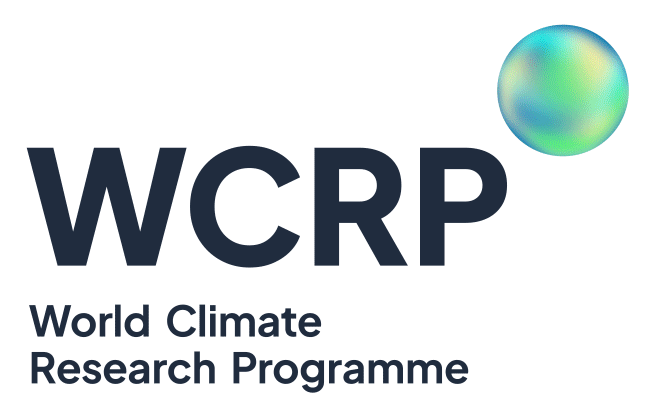Background
Observations show that Earth’s system has warmed, and global-mean surface temperature has risen about 1.1 K compared to the pre-industrial era. Human influence is assessed to be unequivocal (IPCC AR6). The surface warming is spatially heterogeneous and, in the tropics and subtropics in particular, the pattern is critical for the regional hydrological cycle following the warmer-get-wetter mechanism (Huang et al. 2013). The spatial patterns of tropical Pacific sea surface temperatures (SSTs) are closely coupled to the large-scale atmospheric circulations in the tropics (i.e., Walker and Hadley circulations), and are particularly important because the accompanying shifts in the location of deep convection are communicated into the extratropics by atmospheric Rossby waves, having a far-reaching effect on the global climate. Tropical SST patterns also influence shifts in the major rainfall variability over the ocean, leading to, for example, an increase in the frequency of extreme El Niño events (Cai et al. 2014). They also influence the occurrence of marine heatwaves, monsoon systems and the pathways of tropical cyclones. The tropical Pacific warming pattern has recently been revealed to modulate global climate feedbacks associated with cloud and lapse rate changes, thereby exerting a critical impact on the estimate of climate sensitivity and remaining carbon budgets (Sherwood et al. 2020; IPCC AR6). Understanding the mechanisms for SST pattern formation over the tropical Pacific in a warming climate is a frontline problem in current climate science.
The tropical Pacific SST is robustly projected to increase in models with a local maximum in warming on the equator and more warming in the eastern than the western side of the basin (Liu et al. 2005; Xie et al. 2019). A reduced zonal SST gradient in the equatorial strip is commonly explained by the slowdown of convective overturning associated with weaker radiative cooling relative to water vapor increase. Less efficient evaporative cooling over the climatologically cold eastern Pacific relative to the climatologically warm western Pacific contributes to both reducing the zonal SST gradient and enhancing warming on the equator. In addition, the east-west difference in cloud radiation feedback regimes, that is, positive stratus feedback in the east and convective feedback in the west, also favors a weakened zonal SST gradient, albeit with much inter-model uncertainty.
However, the robustness of the projected zonal gradient weakening has been questioned because CMIP5/6 models fail to capture observed tropical Pacific SST trends (McGregor et al. 2014; Coats and Karnauskas 2017; Wills et al. 2022). In the recent past, the tropical Pacific has undergone a significant cooling particularly in the eastern basin, whereas the CMIP models simulate a warming under the historical forcing (Figure 1). The model-observation discrepancy may stem from numerous causes: for example, the dominance of internally generated climate variability in the observed trends (Watanabe et al. 2021), inadequate representation of historical radiative forcing in the CMIP protocol (Holland et al. 2022), model deficiencies in representing important mechanisms such as Bjerknes feedback (Seager et al. 2019), ocean mixing and dynamical processes, as well as tropical interbasin interactions (Cai et al. 2019). Various climatological local or non-local SST biases, such as the excessive cold tongue bias over the equatorial Pacific, are also likely to play a role in the model-observation discrepancy (Ying et al., 2019).
Figure 1: Discrepancy between observed and modeled SST trends for 1979-2020 (top: ERSST observations and bottom: multi-model mean from CMIP6 historical simulations (adapted from Wills et al. 2022).
There are conflicting theories for radiatively forced SST pattern trends in the tropical Pacific, namely the ‘ocean thermostat’ and ‘weaker Walker’ hypotheses (Clement et al. 1996; Held and Soden 2006). Models can exhibit both mechanisms, with different amplitudes and time scales. For example, in abrupt 4xCO2 experiments the ocean thermostat determines the fast response, whereas the weaker Walker determines the slow response (Heede et al. 2021). Nevertheless, the thermostat mechanism appears to be more dominant in observations.
The tropical Pacific SST pattern may have changed not only through these internal mechanisms, but also via a remote atmosphere-ocean coupled mechanism. Arctic and Antarctic sea ice loss, stratospheric ozone depletion, and extratropical clouds have all been suggested to affect the equatorial zonal gradient (England et al. 2020; Hartmann 2022; Burls et al. 2016). In response to an inter-hemispheric energy imbalance, the atmosphere creates an anomalous cross-equatorial Hadley circulation, modulating the strength of equatorial easterlies which are further amplified by the Bjerknes feedback. On long timescales, accelerated Southern Ocean warming owing to a gradual weakening of ocean heat uptake will also lead to a reduced zonal SST gradient, with the effect severely underestimated in CMIP5/6 models due to an overly weak stratocumulus cloud feedback (Kim et al. 2022).
The causes for the model-observation discrepancy in the tropical Pacific warming pattern is a current ‘hot topic’. It is one of the most serious model-observation discrepancies that undermines confidence in climate projections around the Pacific basin and beyond, including many of the most vulnerable societies. Reflecting that this is an active area of research, many mechanisms have been proposed as laid out above. However, no consensus currently exists on the underlying source of model deficiencies, or even on whether the recent trends reflect the forced response or unforced internal variability. Thus, it is timely to scrutinize each mechanism by addressing the dynamics of the large-scale circulation, its coupling with clouds, radiation, ocean processes, and atmosphere-ocean interactions. It is imperative to assess the relative importance and the relevant timescales of the different mechanisms for enhancing the credibility of future projections.











Add new comment